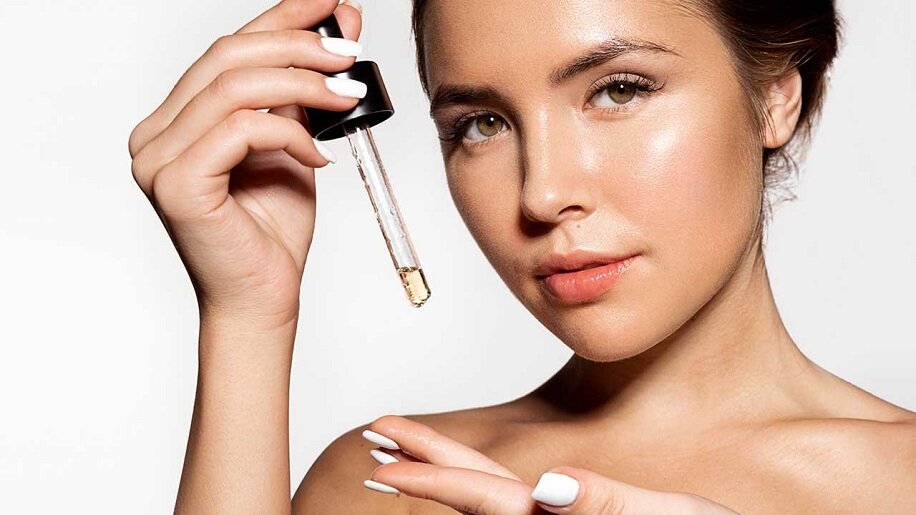Oil or Moisturizer: Which Comes First?
This is a question I get daily at the store and it’s one that seems to cause the most disagreement among beauty bloggers, experts, and internet commentators in general. Why? Shouldn’t there be a definitive answer to this? The answer is yes, and no. You see the problem? Order of skin care operations is the question I am asked most frequently. Even after discussing the issue, I am often found writing the directions down to a customer who swears she will never remember. It’s understandable, considering just how many cleansers, serums, moisturizers, essences, and oils there are on the market. How can you remember which comes first? The short answer is the law of viscosity, but we’ll get to that later. For now, I’ll lay out the general order of your products.
Order of skin care operations is the question I am asked most frequently. Even after discussing the issue, I am often found writing the directions down to a customer who swears she will never remember. It’s understandable, considering just how many cleansers, serums, moisturizers, essences, and oils there are on the market. How can you remember which comes first? The short answer is the law of viscosity, but we’ll get to that later. For now, I’ll lay out the general order of your products.
Step One – Cleanse
This includes double cleansing. All cleansing takes place first.
Step Two – Exfoliate
I prefer chemical exfoliation to physical exfoliation nine times out of ten. It is more effective and gentler on the skin. These are your pads from Dr. Gross, Zelens, or Cane + Austin. If you need a bit of physical exfoliation it would be done here as well, but in place of a pad…not in addition.
Step Three – Tone
This is where you balance your pH levels and remove and residual cleanser or dirt on the face. If you have two toners -- an acidic one and a more traditional hydrating one -- use the acidic one first and follow with the hydrating one.
Step Four – Essence
This is where you begin your hydrating process and infuse your skin with beneficial ingredients. Spray essences or rosewater facial sprays are wonderful here before we lock them in with next steps.
Step Five – Eye Cream
It’s important to put on your eye cream before any serums. Your eye cream needs to penetrate the delicate eye area and get to work and it can’t do that if you’ve already rubbed a serum on the area. The only exception to this would be a light vitamin C serum if the texture is water like. If it’s oil like, then it comes after the eye cream. Skinceuticals would be an example of a water-based vitamin C serum and would go before the eye cream. One Love Organics, Kiehl’s, or Mario Badescu would be examples of heavier vitamin C serums and would follow an eye cream.
Step Six – Serum
This is when you apply your hyaluronic acid, your retinols (at night), or any other serum-based products you may have. What if you have more than one? This is where you may want to alternate day to day or follow the law of viscosity: the lighter first, followed by the heavier.
Step Seven – It Depends (Oil then Moisturizer / Moisturizer then Oil)
Ah, the dreaded decision. What to do? It entirely depends on your oil and your moisturizer and your skin type/condition.You first need to know what type skin you have: dry, dehydrated, oily, or combination. Dryness refers to a skin type, while dehydration refers to a skin condition. Dry skin produces less sebum and the lack of sebum means the skin is without the lipids it needs to retain moisture and build a strong barrier to protect it from aggressors. As a result, dry skin needs oil. Therefore, you would apply the oil by pressing it into the skin and then lock it in with a heavier moisturizer, preferably one like Skinceuticals Triple Lipid Restore to build up its barrier system. However, the type of oil is still important here. If your oil is one of the lighter ones with ingredients like rosehip, argan, grapeseed, and squalene, then it should go on first. If it is a heavier oil, like coconut or shea, then it should follow the moisturizer as the oil molecules are too large for the moisturizer to penetrate.If you have dehydrated skin, your skin lacks water. In this case, you should apply a water-based moisturizer first and lock it in with an oil. A moisturizer like Dr. Dennis Gross Marine Moisture Cushion is hyaluronic acid based and is essentially a large drink of water for your skin. Follow that with an oil like Maya Chia or Zelens Z-22.What if you have combination skin? Does your skin feel dry, but seem oily in places or break out? This is a likely sign that your skin is dehydrated. As I’ve said before, skin can’t be oily and dry. So, if you are breaking out, but feel dry in spots or have oily skin with dry patches…your skin is begging for hydration. The excess oil production is your skin’s way of trying to hydrate itself. Exfoliating away the dead skin and following with hyaluronic acid serums and moisturizers will help immensely.So, oil first or moisturizer? The answer depends on your skin type.

